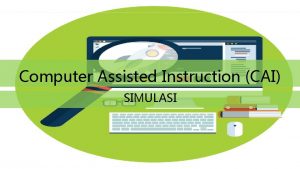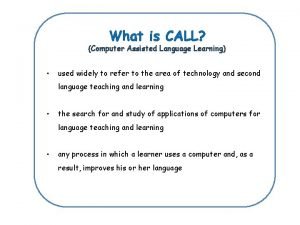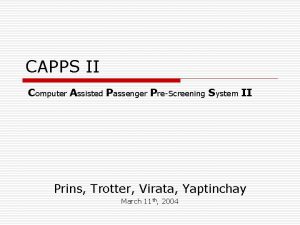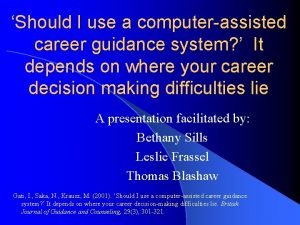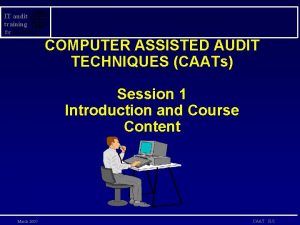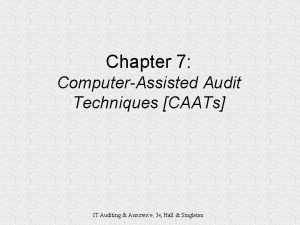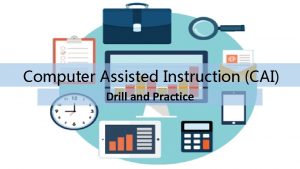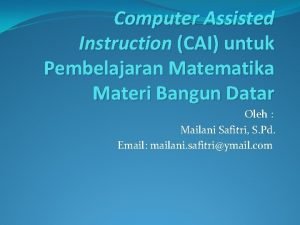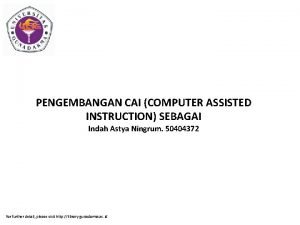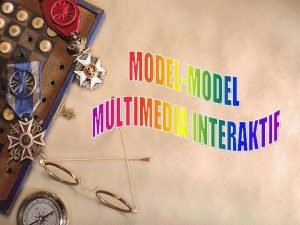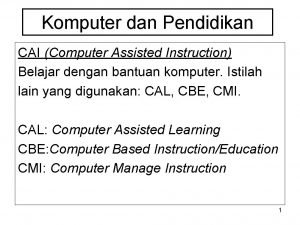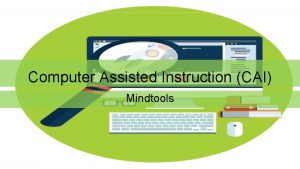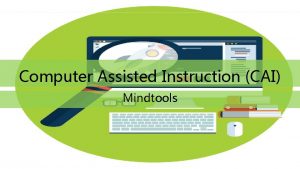Cultural Relevance and Computer Assisted Instruction CAI A











- Slides: 11

Cultural Relevance and Computer Assisted Instruction (CAI) A study by: Jaqueline Leonard James Earl Davis Jennifer L. Sidler Journal of Research on Technology in Education Presented by Christine Ray

Focus of study o Research Questions: n n n What effect will the CAI have on task engagement in African American Elementary School students? How will this program effect students’ ability to solve math and science problems? What effects will environment and prior teaching have on student outcomes?

Overview of CAI Software o o Engaged students in a Computer Simulation of Riding the Freedom Train, an Underground Railroad themed CAI. Math and Science content embedded into program. The Program employed a “Learning for Use” model and was “Problem solving Based. ” n Encouraged higher order thinking skills. n Goal directed. n Scaffolding and hints provided. Introduced as supplement to teacher instruction.

Study Participants o o Students in (3) fourth-grade classrooms. Two Schools-Pennsylvania & Illinois. n n Ethnic background (both schools) >98% African American. No significant differences in SES, gender, or achievement-test scores.

Rationale African American Students q Achievement Gap. n NAEP 46% of AA 4 th gr. and 61% 8 th gr. are below basic level of math achievement. q Low income students have difficulty w/ processing math language when presented out of context. q Technology Gap Culturally Relevant Instruction n n Improves motivation. “Anchors context to content. ” Validates the way that students count, measure, classify, & infer meaning and links it to culture. Consistent with NCTM goals and standards.

Method-Data Collection o o o Pre Test- pencil/paper. Post Test- scores from CAI program. Teacher interview Sample student interviews (random). Observation-video taped (1 classroom)

Riding the Freedom Train Story Line: Narration with digital images o o o Fictional Character: Sam, a slave on a MD plantation. Sam decides to leave plantation and travel north on the Underground Railroad to freedom in PA. Students must help Sam on his journey by answering a series of math and science problems.

Examples of Embedded Questions “The Big Dipper is made of stars, and stars are made out of ____? ” a. Rocks b. Gases c. Glitter d. Clouds “Sam wants to take 20 fruit on his journey and eats 2 fruit per day. How many fruit did Sam eat if it Takes him 8 days to get to Philadelphia? ” ____ No choices provided.

Results o o Engagement: Interview and observations indicated a high level of engagement & enjoyment. Pre-test vs. post test accuracy Science-56% increase n Math-43% increase Environmental Factors: Computer lab vs. classroom work station made no significant difference. n

o Other benefits: n n n Students gained better understanding of the concept of the Underground Railroad. CAI promoted independent inquiry about Underground Railroad. No significant difference between group performances despite marked differences in overall unit instruction.

Considerations o o Study could not be generalized and no control group was used. Unanswered Questions: n n Would students do as well with same activities (i. e. narration with embedded problems) without computer software? Would there have been a difference in student performance if pre tests and post tests had identical formats and methods?
 Contoh computer assisted instruction
Contoh computer assisted instruction What is call computer
What is call computer Oedmodo
Oedmodo Computer assisted passenger prescreening system
Computer assisted passenger prescreening system Computer assisted guidance systems
Computer assisted guidance systems Types of computer assisted audit techniques
Types of computer assisted audit techniques Computer aided teaching and testing slideshare
Computer aided teaching and testing slideshare Base case system evaluation
Base case system evaluation Differentiated instruction vs individualized instruction
Differentiated instruction vs individualized instruction Indirect instruction definition
Indirect instruction definition Rigor relevance and relationships framework
Rigor relevance and relationships framework Rigor relevance and relationships in action
Rigor relevance and relationships in action
